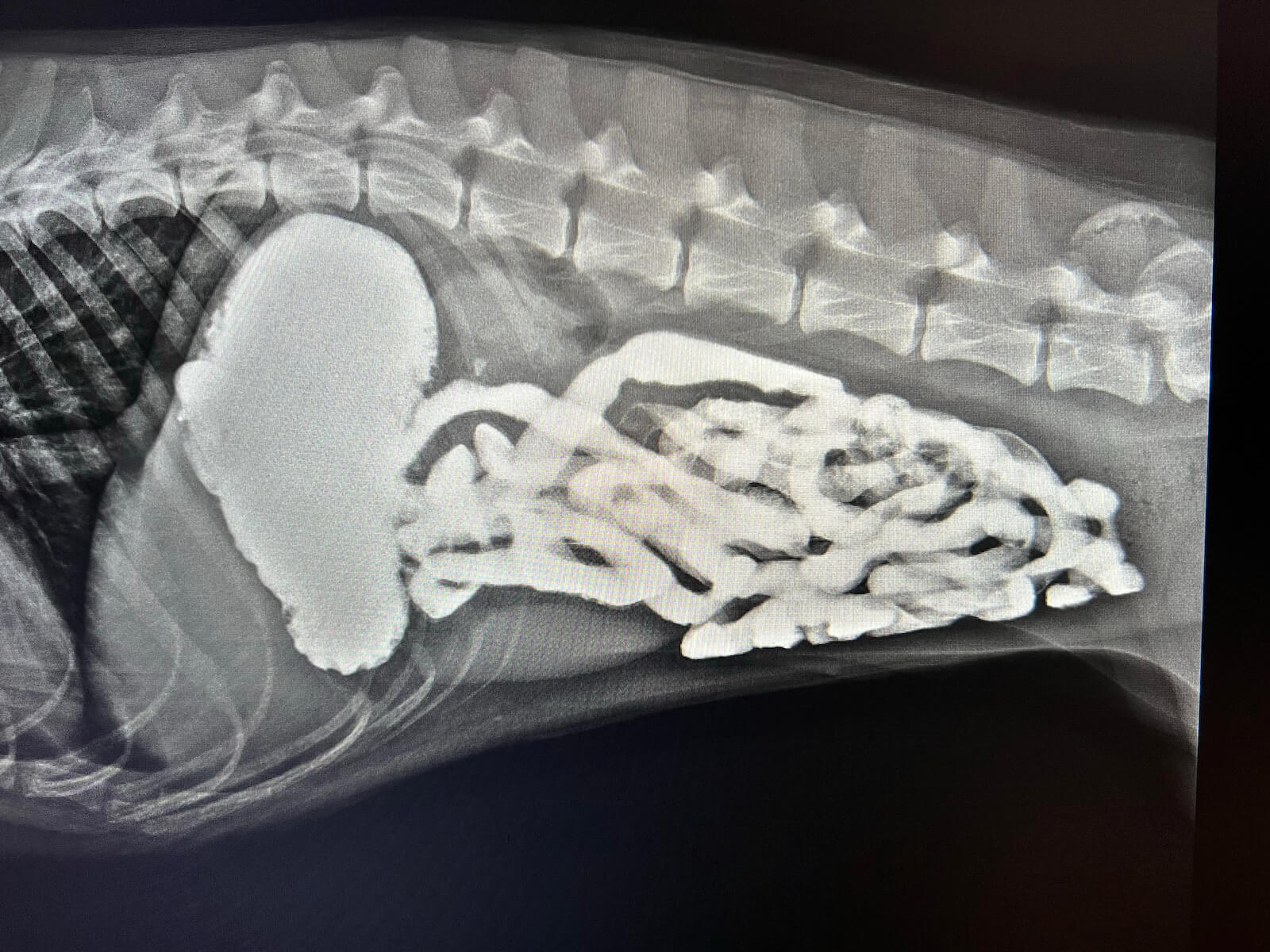A barium x-ray series is a diagnostic test that aids in the diagnosis of gastrointestinal disorders in dogs and cats. This type of examination may be used to look for foreign objects, gastrointestinal masses, intestinal blockages, or evaluate motility. It is important that when giving barium to your pet, you have a complete understanding of how this test works. In this post, we will discuss what barium is and why it's used for diagnosing these types of ailments. We'll also cover some risks associated with using barium in dogs and cats so you can decide if it's right for your pet!
What is barium and how does it work?
Barium is a radiographic contrast medium and when ingested, coats the inside of the gastrointestinal tract. This coating helps to create a clear image on an x-ray, allowing your veterinarian to visualize any abnormalities that may be present in the esophagus, stomach, or intestines. Barium passes throughout the intestinal tract unchanged, with very little being absorbed. Barium sulfate (BaSO) is the most common form of barium used for diagnostic imaging and is available as a liquid.
After your pet ingests the barium, a series of sequential X-rays will be performed. This allows your veterinarian to "follow" the barium as it moves throughout the gastrointestinal system. The costs involved in this procedure are often related to the number of radiographs required to obtain a diagnosis. A complete barium series would require anywhere from 4-8 X-rays.
Why do veterinarians use barium in dogs and cats?
Barium is used in dogs and cats to help diagnose a variety of gastrointestinal disorders, including:
- Foreign objects within the gastrointestinal tract
- Disorders of the esophagus
- Gastrointestinal masses
- Intestinal blockages
- Evaluating gastrointestinal motility
The barium series X-ray is a common test used to evaluate these issues and can provide your veterinarian with valuable information about your pet's gastrointestinal system.
How is the Barium x-ray series performed in dogs and cats?
If your veterinarian suspects that your pets would benefit from a barium series, your veterinary team will first administer the barium orally. This could be barium mixed with canned food or carefully administered via a syringe. After the barium is administered, sequential X-rays will be performed at a time that your veterinarian feels necessary. Below are some examples of what we see after barium is administered. You will notice that the barium is moving through the gastrointestinal system well with no signs of blockages.



Possible risks of using barium in dogs and cats
While barium is very safe to be used in pets, there are some risks associated with its use. As most pets do not take barium readily, your veterinary team must carefully administer the barium to your pet, most often using a syringe-feeding technique. The risk of this technique is aspiration, which is when the barium is accidentally inhaled into the lungs. If this occurs it can cause aspiration pneumonia, which is very serious. Of course, your veterinary team is aware of this risk and will take all the precautions necessary to avoid this happening. In some cases, abdominal cramping or constipation can occur but are self-limiting and will resolve spontaneously.
Barium should not be used if your veterinarian suspects intestinal leaking, such as a tear in the intestine. If the barium leaves the intestines intra-abdominally, it can create a severe reaction within the abdominal cavity, called caustic peritonitis.
Barium is a safe and effective way to diagnose gastrointestinal disorders in dogs and cats. However, there are some risks associated with the use of barium such as aspiration pneumonia that occurs when it's accidentally inhaled into the lungs during administration. If your veterinarian suspects intestinal leaking, they should not give barium because if it leaves the intestines intra-abdominally, it can create a severe reaction within the abdominal cavity called caustic peritonitis. It’s important to discuss any concerns or questions about this procedure with your veterinarian as they will be able to help.


